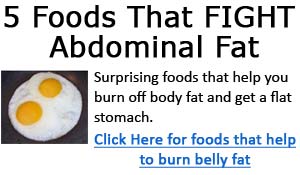The Bottom Line
Health authorities recommend that Americans consume 30 percent or less of their total daily calories from fat, with 10 percent or less of those calories from saturated fat. Use the Nutrition Facts panel on food labels to help determine how much fat is in food. The following chart can help guide your fat intake. Determine how many calories are in your diet and use the chart to discover how many grams of fat are in 30 percent and 10 percent of your calorie intake. Remember, the recommended percentages refer to your total fat intake over time, not the fat in single foods or meals.
Calories per Day Total Fat per Day (grams) Total Saturated
Fat per Day (grams)
1,200 40 or less 13 or less
1,600 53 or less 18 or less
2,000 67 or less 22 or less
2,200 73 or less 24 or less
2,500 83 or less 27 or less
10 Tips to Reduce Fat
To help cut down on your fat intake, use the following tips when preparing foods:
1. Use evaporated skim milk instead of cream when preparing sauces or desserts.
2. Create your own nonfat salad dressing by mixing balsamic vinegar, mustard and herbs. If you really prefer an oil-based dressing, try using three parts vinegar to one part oil.
3. Drain nonfat yogurt through a sieve or cheesecloth overnight in the refrigerator, and use in recipes that call for cream.
4. Saute foods in chicken broth, vegetable stock, tomato juice or wine instead of frying them in oil or butter.
5. Keep olive oil in a spray bottle to a lightly coat sauté pans.
6. You can make your own taco shells. Hang soft corn tortillas directly over the oven rack (with the sides of the tortilla hanging down) and bake at 400 degrees until they're crisp. (Taco shells sold in supermarkets are usually fried.)
7. Whip up your own french fries. Place _-inch-thick potato slices on a nonstick baking pan and coat with a light spray of oil. Sprinkle with paprika or salt, and bake at 350 degrees for 35 to 40 minutes. Turn once during baking. (For a different flavor, try this recipe with sweet potatoes.)
8. To maximize flavor, toast nuts before baking with them. That way, you'll be able to use less. Or sprinkle nuts on top of a home-baked dessert instead of mixing them into the batter.
9. Substitute six egg whites plus one whole egg for every three eggs in your favorite recipes.
10. Substitute an equal amount of applesauce or any baby-food fruits for up to half of the total oil in your favorite dessert recipes. Strained prunes actually enhance the chocolate flavor in brownies!
Sandy Markiewicz, RD, MBA, is the president of Nutrition Marketing Consultants, a consulting firm based in Chicago, Illinois, that designs nutrition programs for personal trainers, health clubs, corporations and individuals.

 By now you know that too much fat--especially saturated
fat--is not good for you. Your body can easily store excess
calories from fat as body fat. Plus, saturated fats from
animal products, such as meats and dairy foods, can clog
your arteries and contribute to heart disease.
By now you know that too much fat--especially saturated
fat--is not good for you. Your body can easily store excess
calories from fat as body fat. Plus, saturated fats from
animal products, such as meats and dairy foods, can clog
your arteries and contribute to heart disease. 